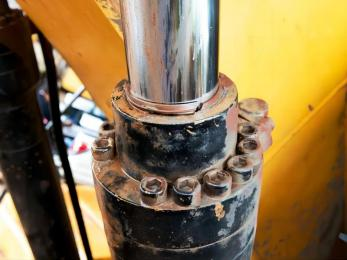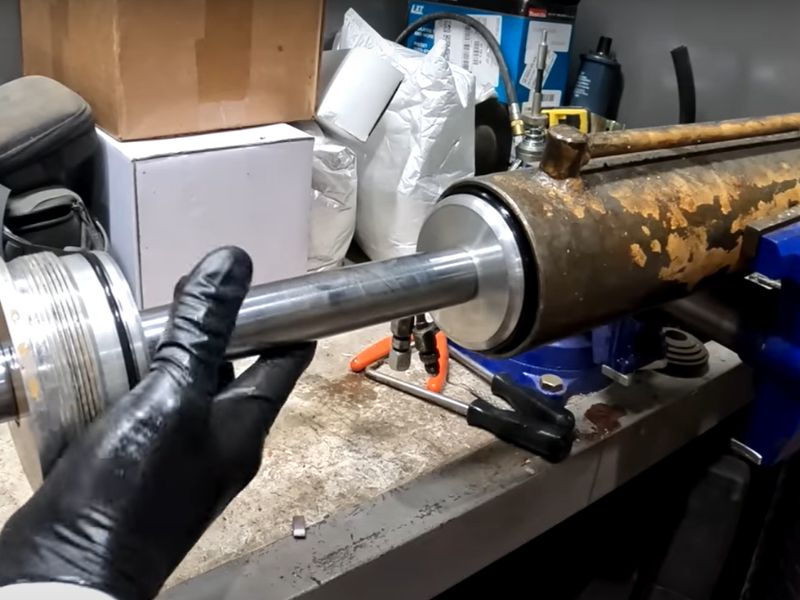What happens when these powerful hydraulic cylinders start to drift? Hydraulic cylinder drift is an often overlooked problem that can lead to reduced efficiency, potential safety hazards, and costly downtime. This comprehensive guide takes an in-depth look at troubleshooting hydraulic cylinder drift, providing a thorough analysis of its causes, symptoms, and solutions. From recognizing the early signs of drift to implementing advanced troubleshooting techniques, we’ll guide you through the complexities of maintaining optimal hydraulic system performance.
At its core, hydraulic cylinder drift refers to the unintended movement of a cylinder’s piston rod when it should remain stationary under pressure. This phenomenon, although seemingly subtle, can be the precursor to significant operational challenges in hydraulic systems. Drift occurs due to an imbalance in pressure on either side of the piston, causing the piston rod to creep or move without any external control inputs.

One of the primary culprits behind hydraulic cylinder drift is fluid contamination. Hydraulic fluid, which is the lifeblood of these systems, must remain clean and free of contaminants to function effectively. When contamination occurs, it can lead to a range of issues, including the degradation of seals and the erosion of internal components. For example, particulate matter in the fluid can abrade the cylinder bore or piston seal, leading to internal leakage and, consequently, drift.
Seal wear is another common cause of drift. Over time and with constant use, the seals in a hydraulic cylinder can wear out or become damaged. This wear and tear compromises the seal’s ability to maintain pressure, allowing fluid to bypass the piston and causing the rod to move unintentionally. Similarly, issues with valves, especially control valves that manage fluid flow and direction, can also contribute to drift. A malfunctioning valve might not regulate the fluid flow correctly, resulting in an imbalance in pressure that causes the cylinder to drift.
The impact of drift on the performance and efficiency of hydraulic systems is significant. In precision-based applications such as CNC machining or the operation of heavy construction equipment, even minor drift can lead to inaccuracies and operational inefficiencies. This not only affects the quality of work but also increases the wear and tear on the system, leading to more frequent repairs and replacements. In severe cases, drift can pose safety risks, particularly in applications where the precise positioning of heavy loads is crucial, such as in cranes or lifts.
The impact of drift on the performance and efficiency of hydraulic systems is substantial. For instance, in precision-based applications such as CNC machining or in the operation of heavy construction equipment, even a slight drift can cause inaccuracies and operational inefficiencies. This not only affects the quality of work but also accelerates the wear and tear on the system, necessitating more frequent repairs and replacements. In extreme cases, drift can pose safety hazards, particularly in scenarios where precise positioning of heavy loads is critical, such as with cranes or lifts.
Additionally, drift may signal underlying issues within the hydraulic system, such as fluid contamination or component degradation. If these problems are ignored, they could result in more severe system failures. Drift acts as an early warning, indicating that maintenance or repair is required to prevent further damage and to ensure the system's durability and reliability.

1.Uncontrolled Rod Movement: One of the most noticeable signs of cylinder drift is when the piston rod moves without any control input or fails to maintain its position under pressure.
2.Decreased System Efficiency: Drift can result in a loss of force and precision within the hydraulic system, impacting overall operational efficiency.
3.Abnormal Noises: Unusual sounds, such as knocking or hissing, from the hydraulic cylinder may indicate internal issues that could cause drift.
4.Fluid Leakage: Visible fluid leaks around the cylinder can suggest seal failure, which is often associated with drift.
5.Irregular Response Times: A delay in the cylinder's response when actuated can also be a symptom of drift, indicating potential issues with fluid pressure or flow.
1.Pressure Tests: Pressure gauges can be used to measure and compare the pressure levels on both sides of the piston. A significant imbalance often indicates internal leakage, a common cause of drift.
2.Visual Inspections: Regular visual checks of the cylinder, looking for signs of wear, damage, or fluid leakage, can help identify potential drift issues.
3.Leakage Tests: Applying a light coating of oil to the cylinder while it is pressurized can help reveal external leaks. Internal leaks may be diagnosed by observing the cylinder's movement when it should be stationary.
1.Check Fluid Levels and Quality: Ensure that the hydraulic fluid is at the correct level and free of contamination.
2.Inspect for External Damage: Look for any physical damage to the cylinder, seals, or hydraulic lines.
3.Test for Internal Leakage: This can be done by extending the cylinder and then monitoring for any movement when the system is at rest.
4.Evaluate Control Valves: Ensure that the valves are functioning correctly, as faulty valves can disrupt the hydraulic balance, leading to drift.
Begin by visually inspecting the hydraulic cylinder for any external signs of damage, such as cracks or leaks.
Check the hydraulic fluid level and quality; low or contaminated fluid can often be the root cause of drift.
Inspect the cylinder for both internal and external leaks. External leaks are usually visible, while internal leaks require more detailed investigation.
A simple test is to extend the cylinder and mark the position of the rod. If the rod moves from this mark without any system pressure, it indicates an internal leak.
Worn or damaged seals are a common cause of drift. Examine the seals for any signs of wear or damage and replace them if necessary.
Check the control valves for proper operation. Malfunctioning valves can cause uneven pressure distribution, leading to drift.
Use pressure gauges to test the balance of pressure on both sides of the piston. An imbalance can indicate issues with the valves or the pump.
Check the piston rod for any signs of bending or damage, as this can cause uneven movement.
Inspect the cylinder bore for scratches or wear. Any damage here can compromise the seal and lead to drift.
Always start with the simplest checks (like fluid level and quality) before moving to more complex diagnostics.
Keep a log of all maintenance and inspections; this can help identify recurring issues or patterns leading to drift.
Use the process of elimination: once you rule out the most common causes, focus on less obvious potential issues.

Regular maintenance is the cornerstone of preventing hydraulic cylinder drift. Scheduled inspections allow for the early detection and rectification of potential problems before they escalate into major issues. A well-maintained cylinder should have its seals checked and replaced regularly to prevent leakage and drift. Similarly, routine checks for corrosion, wear, and damage to the cylinder, rod, and other components are essential. Keeping a maintenance log can help track the health of the system over time and predict when parts might need servicing or replacement.
The choice of hydraulic fluid is critical; it should be compatible with the system’s temperature requirements and the materials of the hydraulic components. Using the wrong type of fluid can lead to accelerated wear and tear, contamination, and ultimately, cylinder drift.
Ensure the use of high-quality filters to keep the hydraulic fluid clean and free from contaminants. Regularly changing the filters can significantly reduce the risk of drift. When replacing parts, use components that match the specifications and quality standards of the original system. Substandard or incompatible parts can adversely affect system performance.
Proper training for operators and maintenance personnel is essential. This includes training on the operation of the hydraulic system, recognizing the signs of potential drift, and understanding the procedures for troubleshooting and maintenance. Implement safety protocols to ensure that troubleshooting and maintenance are carried out safely, especially in systems where drift can pose a significant safety risk. Foster a culture of proactive maintenance, encouraging operators to report any signs of malfunction immediately.
The insights and strategies discussed in this guide provide a comprehensive roadmap for professionals dealing with hydraulic cylinder drift. Regular maintenance, early detection of drift, and the use of advanced diagnostic tools are the cornerstones of effective troubleshooting. By following these practices, operators can ensure their systems run at peak efficiency, minimize downtime, and maximize productivity.